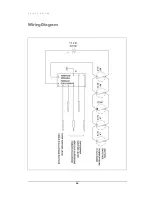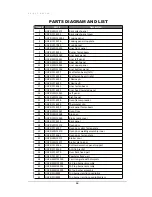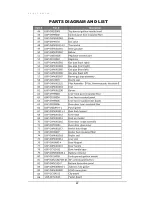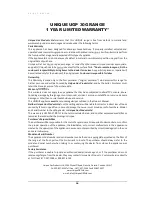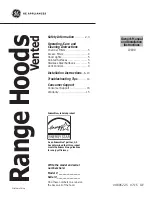
29
CLEANING THE RANGE
Always keep cleaning materials and chemicals in a safe place and away from children.
Know what you are using. Make sure all parts of the range are COOL before cleaning. Be
sure to replace the parts correctly.
Knobs
Pull forward on the knobs to remove them. Wash in a water solution with a mild
detergent mix. Do not use an abrasive cleaner or any abrasive action. Abrasive action will
scratch the knobs.
If the knobs become loose on the valve stem, spread the valve stem slightly with a small
screwdriver.
Using Commercial Oven Cleaners
Commercial oven cleaners may be used on porcelain lined ovens; however, many cleaners
are very strong, and it’s essential to follow instructions carefully. Be sure to wear rubber
gloves to protect your hands.
After using such cleaners, thoroughly rinse the oven with a solution of 1 tablespoon
vinegar to 1 cup of water. Oven cleaners can coat or damage the thermostat sensing
device (the long tube in the oven) so that it will not respond to temperature accurately. If
you use an oven cleaner, do not let it contact the sensing bulb, or any chrome, aluminum,
or plastic part of the range.
Do not apply or allow the cleaner to come in contact with any parts or surfaces
other than the oven interior.
Grates, Main Tops, Surface Burners
The grates are made of porcelain coated steel. These materials can be cleaned at the sink
with detergent or soap-filled scouring pads. Do not be alarmed when the grate loses its
shining finish. The heat from the burners will cause the grates to lose their shining finish.
Clean the burner with soap and water, rinse thoroughly and dry completely before
reassembling. Burner heads can be dried in the oven at about 350 degrees Fahrenheit or
in the dishwasher on the dry cycle. After adjustment or cleaning, replace all parts to their
original position.
The porcelain finish top can be cleaned with detergent and warm water. A mild glass wax
can be used to shine the top.
Products of combustion from the top pilots as well as certain atmospheric
conditions can create an oxidation reaction on the underside of the top. This will
appear as rust or in the form of a reddish brown deposit. This will NOT AFFECT
U N I Q U E U G P 3 0 G




















